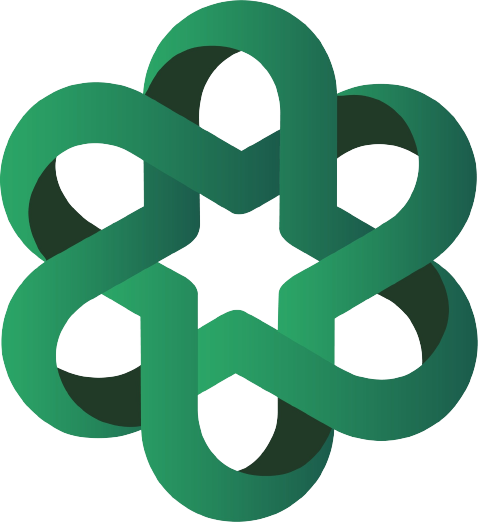In recent years, the global agricultural landscape has been undergoing a transformation towards sustainability. Nations around the world are recognizing the urgent need to adopt practices that not only meet the growing demand for food but also ensure the longevity of our planet.
In this comprehensive exploration, we will navigate through the countries that are setting the benchmark for environmentally sustainable practices in agriculture and delve into the key components that define and drive sustainable agriculture.
Several countries have emerged as leaders in implementing sustainable practices in agriculture. From precision farming techniques in the Netherlands to agroforestry initiatives in Costa Rica, these nations serve as inspiration for a global shift towards sustainable farming.
The blog will highlight specific examples, showcasing the impact of these practices on the environment and local communities.
“In the fields of sustainability, cultivating a future starts with embracing Sustainable Practices in Agriculture, where every seed sown is a promise to nurture our planet.”

Cultivating Tomorrow: Exploring Key Sustainable Practices in Agriculture
To understand sustainable practices, defining their scope is crucial. These practices range from reducing chemical inputs to fostering biodiversity, forming a diverse spectrum within sustainable agriculture.
Sustainable agriculture is rooted in a triad of commitments: environmental stewardship, economic viability, and social responsibility. Environmental stewardship prioritizes minimizing ecological impact and preserving biodiversity. Economic viability extends its reach beyond individual farms, ensuring fair compensation and supporting rural communities.
Social responsibility promotes equitable relationships, emphasizing fair labor practices and community engagement. In dissecting the principles distinguishing it from conventional methods, we aim to provide readers with a clear understanding.
“Harvesting the future we want begins with sowing today’s seeds of Sustainable Practices in Agriculture, fostering a legacy of responsible cultivation.”
Sustainability Unveiled: Mastering Key Practices for Agricultural Harmony
Implementing sustainable practices requires strategic approaches. Crop rotation, for instance, maintains soil health by disrupting pest and disease cycles. Similarly, cover cropping contributes to soil improvement and reduces reliance on synthetic inputs.
Agroforestry integrates trees into agricultural landscapes, promoting biodiversity and carbon sequestration. Additionally, Integrated Pest Management (IPM) focuses on environmentally friendly pest control. Conservation tillage is another vital practice, minimizing soil disturbance to enhance soil structure and moisture retention.
Certification, Standards, and Continuous Evolution
Certification programs like Rainforest Alliance and USDA Organic play a vital role in ensuring adherence to sustainable practices, providing consumers confidence in the ethical and environmental credentials of products.
Sustainable agriculture is not static; it evolves with new research and technology. Farmers continually incorporate innovative practices, from precision farming to data analytics, optimizing resource use and reducing environmental impact.
In conclusion, sustainable practices in agriculture represent a holistic and evolving approach that harmonizes farming with nature. This balanced integration of principles, practices, and ongoing evolution is vital for a resilient, responsible, and sustainable future in agriculture.
2: Cultivating Change: A Deep Dive into Sustainability Practices in Agriculture

Explore the fusion of innovation and sustainability in modern agriculture. From advanced technologies to agroecological methods, discover diverse strategies enhancing sustainability.
Real-world examples and case studies illustrate tangible benefits. Farmers, through innovation, achieve economic viability and contribute to broader environmental stewardship.
“The heartbeat of a thriving planet lies in the rhythm of Sustainable Practices in Agriculture, where each eco-friendly choice echoes through the fields and beyond.”
Revolutionizing Agriculture: Exploring Innovative Farming Techniques for a Sustainable Future
Sustainability in agriculture is actively practiced through innovative farming techniques that align with environmental, economic, and social sustainability. Precision farming, leveraging technologies like GPS-guided tractors and drones, optimizes resource use, reduces waste, and enhances overall efficiency.
This tech-driven approach exemplifies a commitment to sustainable practices by minimizing the environmental impact of farming activities.
Harmony in Fields: Nurturing Sustainable Agriculture Through Agroecological Approaches
The adoption of agroecological approaches represents a fundamental shift toward sustainability. Farmers embrace practices that mimic natural ecosystems, promoting biodiversity, soil health, and ecosystem resilience.
These approaches prioritize the integration of ecological principles into farming, fostering a balanced and sustainable coexistence between agriculture and the environment. Agroecology stands as a testament to the practical implementation of sustainability, creating resilient agricultural systems that benefit both farmers and the planet.
Community Engagement and Knowledge Sharing in Agriculture
Sustainability in agriculture extends beyond the field to encompass community engagement and knowledge sharing. Farmers actively participate in programs that promote sustainable practices, sharing insights and best practices within their communities.
This collaborative approach not only fosters a sense of social responsibility but also creates a ripple effect, encouraging widespread adoption of sustainable farming methods.
The emphasis on education and knowledge-sharing ensures that the principles of sustainability are embedded in the fabric of agricultural communities.
In conclusion, the practical implementation of sustainability in agriculture involves a dynamic interplay of innovative farming techniques, agroecological approaches, and community engagement. By embracing these practices, farmers contribute to a green revolution that prioritizes environmental health, economic viability, and social well-being, paving the way for a more sustainable and resilient future in agriculture
Persuading Minds, Transforming Fields – Advocating for Sustainable Agriculture Practices

Convincing stakeholders, including farmers, policymakers, and consumers, to embrace sustainable practices is a pivotal step in fostering widespread change.
This section will delve into effective communication strategies, economic incentives, and educational programs aimed at encouraging the adoption of sustainable agricultural practices.
“In the dance between humankind and nature, Sustainable Practices in Agriculture choreograph a harmonious partnership, cultivating crops and resilience hand in hand.”
Empowering Agriculture through Education and Awareness Campaigns
Convincing individuals to embrace sustainable practices in agriculture begins with comprehensive education and awareness campaigns. Initiatives that highlight the environmental, economic, and social benefits of sustainable farming play a pivotal role.
By disseminating information about the long-term advantages, including enhanced soil health, reduced environmental impact, and increased economic resilience, these campaigns empower farmers and stakeholders to make informed decisions in favor of sustainability.
Exploring Economic Incentives and Support Programs for Sustainable Agriculture
The adoption of sustainable practices can be further incentivized through economic measures. Governments and agricultural organizations can implement subsidy programs that reward farmers for adopting eco-friendly practices.
Financial incentives, coupled with support programs that provide access to sustainable farming resources and technologies, create an environment conducive to widespread adoption. By demonstrating the economic viability of sustainable practices, these initiatives encourage a shift toward more environmentally responsible agriculture.
Uniting Forces through Stakeholder Collaboration and Advocacy in Agriculture
Stakeholder collaboration and advocacy are essential components of convincing people to implement sustainable practices in agriculture. Engaging with farmers, policymakers, environmental organizations, and consumers fosters a shared understanding of the importance of sustainability.
Collaborative efforts can lead to the development of policies that support sustainable agriculture, creating a conducive regulatory environment.
Additionally, advocacy campaigns can raise public awareness, influencing consumer choices and further encouraging the adoption of sustainable practices throughout the agricultural supply chain.
In conclusion, convincing people to implement sustainable practices in agriculture requires a multifaceted approach that includes education, economic incentives, and collaborative advocacy.
By emphasizing the interconnected benefits of sustainability and creating a supportive ecosystem, we can inspire a widespread shift towards more environmentally conscious and economically viable farming practices.
4: Integrating Crops and Livestock for Sustainable Agricultural Excellence

A key aspect of sustainable agriculture involves the integration of crops and livestock. Explore how combining these two elements in a symbiotic relationship can enhance soil fertility, reduce waste, and create a more resilient and productive agricultural system.
“Cultivating a green revolution involves more than just planting seeds; it requires tending to the soil of Sustainable Practices in Agriculture, where innovation meets stewardship.”
Synergistic Systems for Biodiversity in Agricultural Practices
Integrating crops and livestock in sustainable agriculture practices involves creating synergistic systems that enhance biodiversity and overall farm resilience. Agroecological principles guide this integration, emphasizing the complementary relationship between crops and livestock.
Livestock provide valuable manure for crops, contributing to soil fertility, while well-managed pastures can benefit from rotational grazing, preventing soil erosion and promoting plant diversity. This harmonious coexistence ensures a balanced ecosystem, reducing the need for external inputs and fostering sustainable agricultural practices.
Nature’s Recycle: Exploring Closed-Loop Nutrient Cycling for Sustainable Agriculture
A cornerstone of integrating crops and livestock lies in the closed-loop nutrient cycling it establishes. Livestock contribute organic matter to the soil through manure, enriching it with essential nutrients. This, in turn, benefits crop growth, reducing the dependence on synthetic fertilizers.
The cyclical exchange of nutrients between crops and livestock represents a sustainable approach, minimizing waste, and maximizing resource efficiency.
This closed-loop system aligns with the principles of regenerative agriculture, creating a regenerative cycle that enhances soil health and supports sustainable food production.
Cultivating Resilience Through Agricultural Diversification
The integration of crops and livestock enhances farm resilience by diversifying income streams and reducing vulnerability to external factors. Farmers practicing integrated systems are better equipped to weather market fluctuations or climate-related challenges.
Livestock can serve as an additional income source through meat, dairy, or other products, providing a financial cushion during unpredictable times.
This diversification not only contributes to the economic viability of the farm but also embodies a sustainable model that adapts to changing conditions while minimizing environmental impact.
In conclusion, integrating crops and livestock in sustainable agriculture practices is a holistic approach that fosters biodiversity, closed-loop nutrient cycling, and farm resilience.
By embracing these integrated systems, farmers create a harmonious balance that benefits both the environment and the agricultural enterprise, marking a significant stride towards a more sustainable and regenerative future in agriculture.
5: Spotlight on Countries Championing Environmentally Sustainable Agriculture

Embark on a global exploration of agriculture where certain nations emerge as vanguards in championing environmentally sustainable practices.
These agricultural leaders showcase a commitment to weaving responsible farming into the very fabric of their landscapes, creating a harmonious coexistence between agriculture and the environment.
“The fields of sustainability are ripe with the fruits of responsible farming, where Sustainable Practices in Agriculture yield not just crops but a legacy of environmental harmony.”
Navigating the Strategic Landscape for a Greener Future
Picture landscapes where precision technologies seamlessly integrate with traditional wisdom, and regenerative agriculture becomes a cultural norm. These nations exemplify a strategic approach to sustainability, with lush fields adorned by cover cropping, and crops dancing in thoughtful rotation—a picturesque manifestation of holistic agricultural practices that not only boost yields but also nurture ecosystems.
Exploring Beyond Yields – Economic and Social Impacts in Agriculture
This isn’t just a scenic tour; it’s a profound exploration into the economic and societal implications of environmentally sustainable practices.
Success stories extend beyond prolific harvests, encompassing thriving rural communities and mindful consumers who resonate with products cultivated under an environmentally conscious ethos.
Join us in uncovering the policies and initiatives that set these nations apart, transforming regulations into instruments of change.
Together, let’s explore the green havens leading the charge towards a sustainable agricultural future—a future where environmentally sustainable practices are not just a choice but a collective commitment to cultivate a balanced and thriving planet.
6: Sustainable Harvest: Navigating the Nexus of Policies and Practices in Agriculture
Government policies play a crucial role in shaping the agricultural landscape. Examine the impact of different policies on the adoption of sustainable practices. From subsidies that promote eco-friendly farming to regulations that restrict harmful practices, we’ll analyze how policy decisions can drive or hinder sustainability in agriculture.
“Sustainable Practices in Agriculture are the silent architects of a thriving ecosystem, where the soil, the seeds, and the steward unite to create a symphony of responsible cultivation.”
Analyzing Government Policies for a Greener Agricultural Future
Policies wield immense influence in shaping the trajectory of sustainable agriculture. Governments play a crucial role in formulating and implementing policies that either hinder or foster sustainable practices.
Subsidies promoting organic farming, conservation programs, and incentives for agroecological approaches can significantly impact the adoption of sustainable practices.
Aligning policy frameworks with sustainable agriculture principles ensures a supportive environment that encourages farmers to embrace eco-friendly and socially responsible methods.
Regulating Harmful Practices for Sustainable Agriculture
Addressing sustainability in agriculture necessitates the regulation of harmful practices. Policies that restrict the use of certain pesticides or promote the reduction of chemical fertilizers contribute to environmental preservation.
The implementation of regulations against deforestation or excessive water usage also safeguards ecosystems. By curbing detrimental practices, policies act as guardians of sustainability, creating a framework that protects natural resources and promotes long-term agricultural resilience.
Incentivizing Sustainable Practices in Agriculture
Policies can serve as powerful incentives for sustainable agriculture practices. Financial support, tax breaks, and access to resources for farmers adopting eco-friendly methods create a favorable landscape. Governments can establish certification programs that reward adherence to sustainable standards, providing a competitive edge in the market.
Through strategic policy-making, authorities can foster a culture where sustainability becomes economically attractive, encouraging widespread adoption of practices that benefit both the environment and the agricultural sector.
7: Flowing Forward: Principles & Practices for Sustainable Water Management in Agriculture

Water is a finite resource, and its sustainable management is essential for the future of agriculture. Dive into the principles and practices that contribute to responsible water management in agriculture. From drip irrigation systems to rainwater harvesting, discover how farmers are minimizing water usage while maximizing efficiency.
“Each furrow plowed with eco-conscious intent is a step toward a sustainable horizon in agriculture, where Sustainable Practices in Agriculture harmonize with the planet’s heartbeat.”
Exploring Precision Watering Techniques for Agricultural Excellence
At the heart of sustainable water management in agriculture lies the adoption of precision watering techniques. These practices leverage advanced technologies, such as drip irrigation and soil moisture sensors, to optimize water usage.
Precision irrigation ensures that crops receive the right amount of water at the right time, minimizing waste and enhancing efficiency. By embracing these precise methods, farmers contribute to the conservation of water resources and cultivate a more sustainable approach to irrigation.
Water-Saving Crop Choices and Rotations for Sustainable Agriculture
Sustainable water management extends beyond irrigation methods to include strategic crop choices and rotations. Certain crops have varying water requirements, and selecting those suited to the local climate can reduce overall water demand.
Additionally, incorporating crop rotations that balance water-intensive and drought-resistant crops enhances soil health and water retention. These practices not only conserve water but also contribute to the resilience of agricultural ecosystems, adapting to changing water availability.
Rainwater Harvesting and Storage for Sustainable Agriculture
Harnessing the power of nature, sustainable water management incorporates rainwater harvesting and storage. Collecting rainwater during periods of abundance and storing it for later use provides an additional water source during dry spells.
This practice not only reduces reliance on external water supplies but also contributes to groundwater recharge. By integrating rainwater harvesting into agricultural systems, farmers can enhance water resilience and build a more sustainable water management infrastructure.
In conclusion, principles and practices for sustainable water management in agriculture involve a combination of precision techniques, strategic crop choices, and innovative water harvesting methods.
By adopting these practices, farmers not only ensure the efficient use of water resources but also contribute to the overall sustainability and resilience of agricultural systems, nurturing a vital lifeline for both crops and the environment.
8: Nurturing Earth: Exploring Soil Management Practices for Sustainable Agriculture
The health of the soil is paramount to sustainable agriculture. Explore soil management practices that focus on building and maintaining soil health.
Covering topics such as cover cropping, organic amendments, and minimal tillage, this section will provide insights into practices that promote long-term soil sustainability.
“In the language of the land, Sustainable Practices in Agriculture speak volumes about our commitment to a greener tomorrow, where every crop is a testament to responsible stewardship.”
Harnessing the Power of Cover Cropping and Crop Rotation in Agriculture
At the heart of sustainable agriculture lies a commitment to nurturing soil health through strategic practices such as cover cropping and crop rotation. Cover crops, planted between main crops or during fallow periods, protect the soil from erosion, suppress weeds, and enhance overall soil structure.
Crop rotation disrupts pest and disease cycles, improves nutrient balance, and reduces the need for synthetic inputs. Together, these practices create a dynamic and resilient soil ecosystem that supports sustainable farming and minimizes environmental impact.
Earth’s Elegance: Nurturing Growth with Organic Amendments and Minimal Tillage
Sustainable soil management emphasizes the use of organic amendments and minimal tillage. Organic materials, such as compost and manure, enrich the soil with essential nutrients and improve its water-holding capacity.
Minimal tillage practices, like no-till or reduced tillage, reduce soil disturbance, prevent erosion, and preserve soil structure. By minimizing the disruption to the natural state of the soil, farmers enhance its fertility, promoting long-term sustainability and resilience.
Reviving Earth: Unveiling Regenerative Agriculture and Soil Health Monitoring Practices
A cornerstone of sustainable soil management is the adoption of regenerative agriculture practices. This holistic approach focuses on restoring and enhancing soil health, emphasizing the symbiotic relationship between soil, plants, and the environment.
Farmers actively monitor soil health indicators, such as microbial activity and organic matter content, to make informed decisions about their management practices.
Through regenerative agriculture, farmers not only sustain soil fertility but actively contribute to the regeneration of ecosystems, creating a positive impact on the environment.
In conclusion, soil management practices in sustainable agriculture revolve around preserving and enhancing the health of this vital resource. Cover cropping, crop rotation, organic amendments, minimal tillage, and regenerative agriculture collectively form a toolkit that farmers use to cultivate and sustain the fertility of the soil.
These practices ensure the longevity of agricultural systems while fostering environmental stewardship and resilience in the face of changing conditions.
9: Breaking Ground: Confronting Challenges in the Adoption of Sustainable Agricultural Practices

Despite the benefits, the adoption of sustainable practices in agriculture is not without its challenges. Discuss the obstacles faced by farmers, including economic constraints, lack of awareness, and resistance to change. By understanding these challenges, we can work towards developing solutions that facilitate the widespread adoption of sustainable farming methods.
“As stewards of the Earth, our pledge to cultivate a sustainable tomorrow is etched in every leaf, every furrow, and every sunrise on the horizon of Sustainable Practices in Agriculture.”
Breaking the Chains: Navigating Economic Barriers and Financial Constraints in Agriculture
One of the primary challenges facing agriculture in adopting sustainable practices lies in economic barriers and financial constraints. The initial investment required for transitioning to sustainable methods can be a significant deterrent for many farmers. From the costs associated with purchasing new equipment to the potential income fluctuations during the transition period, economic considerations present formidable challenges.
Addressing these challenges requires innovative financial solutions, incentives, and support mechanisms to ease the economic burden and encourage widespread adoption of sustainable practices.
Bridging Fields: Addressing Knowledge Gaps and Educational Needs in Agriculture
A critical hurdle in the journey towards sustainable agriculture is the presence of knowledge gaps and educational needs. Many farmers may lack awareness or access to information about sustainable practices, hindering their ability to make informed decisions.
Providing comprehensive and accessible education on the benefits, techniques, and long-term impacts of sustainable agriculture is crucial. Extension services, training programs, and knowledge-sharing platforms can bridge these gaps, empowering farmers to overcome the challenge of limited awareness and understanding.
Roots of Transformation: Unraveling Resistance to Change and Cultural Factors in Agriculture
Harmonizing Nature and Agriculture: Principles of Sustainable Farming
In the dynamic realm of agriculture, the beacon of sustainability illuminates a transformative path, shaping farming practices globally. The journey unfolds, revealing a rich tapestry of principles, practices, challenges, and triumphs, portraying a vision of a resilient and responsible agricultural future.
Essence of Sustainability: A Holistic Commitment
At its core, sustainable agriculture is a pledge to environmental stewardship, economic viability, and social responsibility. It places a premium on the well-being of ecosystems, economic prosperity for farmers, and inclusive engagement with communities.
This holistic approach comprises a mosaic of interconnected principles woven into the fabric of responsible farming.
Brushstrokes of Progress: Technology and Practices
From precision farming technologies utilizing GPS and drones to agroecological approaches seamlessly integrating crops and livestock, each practice contributes a brushstroke to the canvas of harmonious coexistence between nature and agriculture.
Cover cropping, conservation tillage, and regenerative agriculture exemplify a dedication to nurturing soil health as a foundational resource for sustainable farming.
Overcoming Hurdles: Challenges on the Path to Sustainability
Yet, the journey towards sustainability is not without obstacles. Economic barriers, financial constraints, knowledge gaps, and cultural resistance pose challenges demanding innovative solutions and a nuanced approach.
Overcoming these challenges is crucial for fostering an environment where sustainability is not only embraced but also economically attractive.
Policy as a Catalyst: Shaping Sustainable Trajectories
Policies and regulations emerge as powerful tools shaping the trajectory of sustainable agriculture. Governments play a pivotal role in formulating policies that incentivize eco-friendly practices, regulate harmful activities, and create a supportive ecosystem for farmers.
Certification programs, subsidies, and support mechanisms become crucial instruments for encouraging the widespread adoption of sustainable farming methods.
Envisioning the Future: Precision Technologies, Agroecology, and Community Engagement
Looking ahead, a vision materializes—a future where precision technologies, agroecological approaches, and community engagement seamlessly coalesce.
Today’s challenges become stepping stones to innovation and collaboration. Every stakeholder, from farmers and policymakers to consumers, plays a pivotal role in cultivating sustainability. The choices made today resonate through generations, influencing the health of our planet and the prosperity of future agricultural landscapes.
Continuation of a Collective Journey: Nurturing a Green Revolution
In the pursuit of sustainability, let us cultivate a narrative of responsible stewardship, nurturing a green revolution that transcends fields and encompasses a shared commitment to a resilient, responsible, and sustainable future in agriculture. This is not just the end of a blog; it is a continuation of a collective journey toward a greener horizon in agriculture.





I was recommended this website by my cousin I am not sure whether this post is written by him as nobody else know such detailed about my difficulty You are wonderful Thanks.
I do not even know how I ended up here but I thought this post was great I do not know who you are but certainly youre going to a famous blogger if you are not already Cheers
This website is an absolute gem! The content is incredibly well-researched, engaging, and valuable. I particularly enjoyed the sustainability section. which provided unique insights I haven’t found elsewhere. Keep up the amazing work!